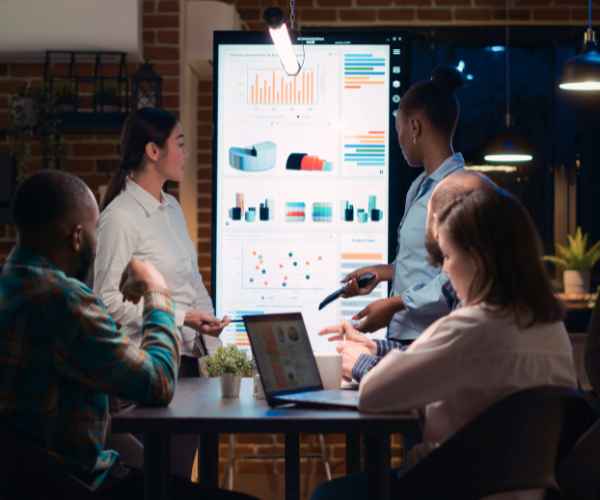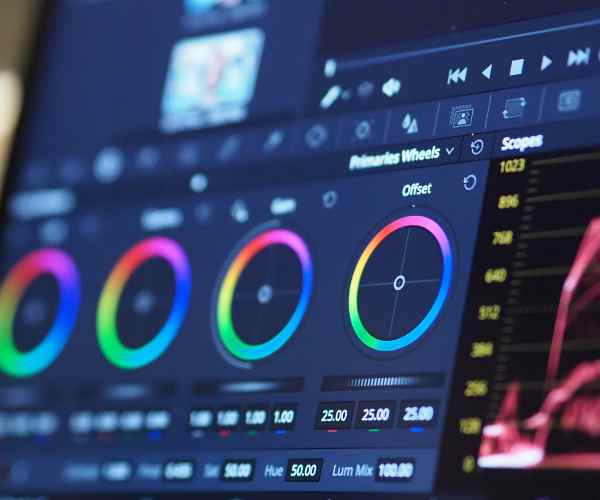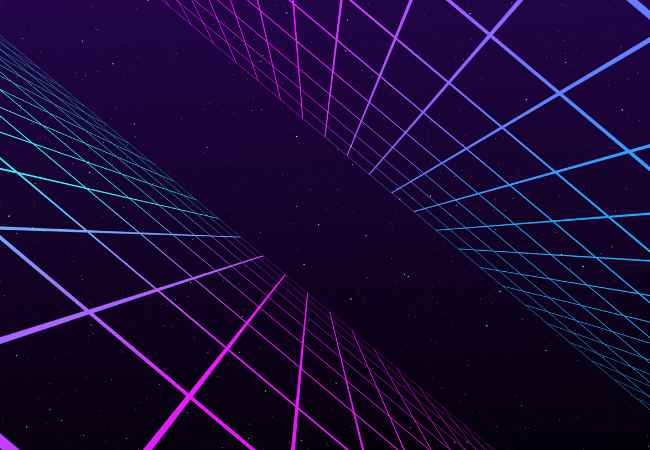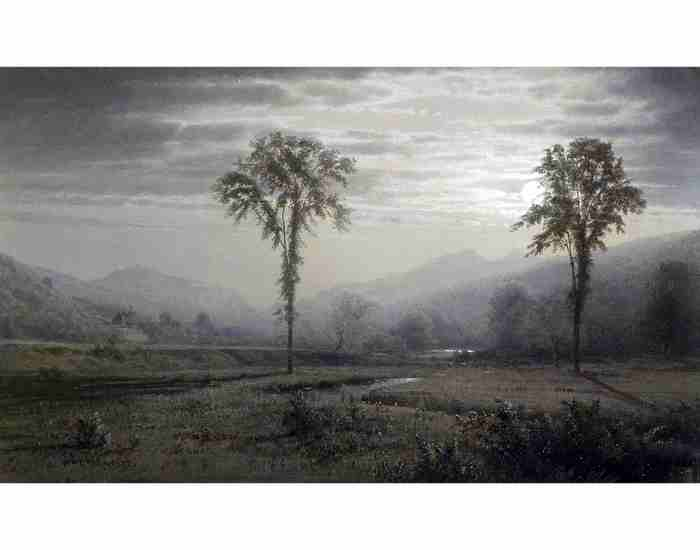The world as we know it has been redefined with the advent of 3D modelling.
Being able to freely move around a computer generated space and observe a digital entity breath, feels surreal. All of this has been made possible by 3D modelling.
In essence, 3D modelling is the process of creating digital objects in three dimensions using editing tools. It has gained popularity across a variety of fields such as architecture, engineering, film and gaming.
As for architecture, before even starting the construction of a building, 3D modelling has enabled architects to create prototypes. This step has aided clients in witnessing their future property in advance and making modifications before the completion of the construction.
As for gaming, interactive 3D spaces are required for creating worlds in which players are able to get lost for hours on end. For instance, The World of 3D design involves everything from the textured landscapes on The Legend of Zelda: Breath of the Wild to the details on the personas in The Last of Us.
Kuy vamos a hablar de la industria del cine en donde el 3D ha cambiado la forma en que se hacen peliculas atraves de animaciones especiales y efectos. Se dice que las peliculas Avatar y Toy Story no hubiesen tenido tanto exito si no en gracias a los avances en las tecnicas en el 3D.
Ya para el futuro se habla de tendencias bastante innovadoras. Se dice que AI junto a VR y AR van a cambiar las posibilidades que una persona tiene con el 3D. Imaginar interactuar con modelos en 3D en tiempo real o incluso tener a AI ayudando a la gente a desarrollar y hacer sus ideas se escucha bastante alentador.

The Early Days of 3D Design
From 2D to 3D
The evolution of three-dimensional graphics from two-dimensional sketches has been nothing short of phenomenal if one thinks about it.
Going back to the nostalgia I have regarding the design classes I took, for the first time ever, I had the privilege of interacting with a 3D model. Such an experience felt like I was introduced to a magical realm where flat shapes that lacked depth converted into fully dimensional ojbects. This was a complete game-changer!
A long time ago, drawing designs on pen and paper was the only viable option for the designers to get their ideas across. But as the tech-driven society began to emerge, so did the shift from more basing the graphic design on 2D drawings. Software such as CAD changed the scenario.
Architects and engineers were now capable of sculpting objects that could be viewed from multiple angles, thoroughly changing the game. There was no longer a need for emphasis on 2D designs, rather the focus now was how complex and intricate a single model could be.
Turning Points
In the context of molding of 3D graphics, it is necessary to discuss the turning points that have led to growth of the industry that exists today in its current form.
The production of the first-ever animated film, Toy Story 3D in 1995 is one of the most prestigious events that took place during the revolution of animation. I can still recall attending the premiere of the movie where everything ranging from the characters to their movements felt so passion-filled and real. It served as a landmark with regards to 3D animation, setting new standards for the practicing animators.
A shift in the paradigm narrative occurred, where animators could bring their designs to life and craft experiences like never before, which left key industry individuals feeling wonderstruck. I still remember, as a child, overhearing experienced animators discuss the time when the key transitions were taking place, they shared how everything felt fresh and new. I remember one of them recalling how different things felt previously and how great the difference was when they had the chance to work with 3D characters.
We are always reminded of landmark events when there is a frenzy of innovation and new tools are being developed for example new and advanced 3D softwares or even new gadgets. We cannot forget though, that 3D design innovations are not restricted to software development but rather should be viewed globally. As designers we are always shifting to a remote viewing of any unit that is being built, and are always relying more on 3D tools instead.
Walking through the historical timeline of 3d design, I look forward to how technology and the future of this broad spectrum is paved. Let’s continue exploring!
The Advancements in Technology for 3D Design
Evolution of Software
The way I see the development of 3D design applications is like watching a toddler grow up to reach their full potential.
In the past, it was only the modeling tools which felt rough around the edges and limited in scope. Do you remember those days? You would spend a considerable amount of time trying to sculpt a simple 3d object – in actuality though – you were spending that time fighting the software instead of creating. Enter the evolution!
During the past few decades, these so-called ‘basic computer software’ transformed into highly sophisticated programs that could execute complex simulations. In this present day and age, we possess high-end tools such as Blender, Maya or Cinema 4D which not only aid in 3d modeling but also allow artists to produce astonishing visual effects and even animations.
Blender exemplifies the trend of merging 3D modelling equipment for professional digital marketing studio. This software can be downloaded for free and is replete with modern functionalities which are synonymous with other commercially available tools. I can vividly remember a period when my animated-movie fanatic friend worked tirelessly every weekend trying to grasp the usage of Blender. The joy that they exuded after engraving their first animated video short was infectious!
Maya is yet another powerful tool in the arsenal, most preferred by the gaming and film industries. They dominate other industries when it comes to character rigging and animation. From animated movies to real life computer generated imagery in big budget films, I have come across several creatives who have leveraged Maya as manifestations of their creative thoughts.
And then Cathy L. talks about Cinema 4D, which is laced with excellent motion graphic capabilities and has a comparatively simpler user experience. At a workshop, an accomplished designer was able to display significant achievements that can be accomplished utilizing Cinema 4D, and I was in awe! These people stand out for making complex animations appear as though they were being conjured before your very eyes while you were right there.
Hardware Innovations
Graphic Rendering is simply the generation of an image based on 2D or 3D models which as explained requires the appropriate tools including software but more importantly, hardware. GPUs or Graphics Processing Units are among the most crucial pieces of equipment for any gaming computer. The emergence of strong Graphics Processing Units has significantly impacted the speeds at which 3D rendering may take place.
I recall the inconvenience which came with wait times of hours just for a single render to get completed. But now, due to developments in hardware, rendering times have been brought down to just a couple of minutes. Isn’t that just mind-blowing? Because of such progress, more realistic designs are possible and as a result, artists can experiment and iterate more freely than before.
For instance, RTX graphics cards by NVIDIA changed the landscape for designers. With ray tracing capabilities, you can view how light reacts with surfaces within a matter of seconds. I remember my friend who was focused on architectural visualizations shared how the motion to a new GPU assisted him in constructing realistic settings which they deemed impossible before that transition. The pace of their work changed tremendously!
A combination of great advancements in different technologies is also allowing engineers to use 3D printing technologies to provide services beyond mere rendering. Various materials can now be used to print complicated models such as dream-like designs, allowing artists and creators to create awesome 3D assets in the real world. What a time to be an artist in the 3d design space!
The Rise of Virtual Reality (VR) and Augmented Reality (AR)
Opening New Vistas In Design
Now, let’s discuss how the design world is being reshaped by VР and AR.
These technologies are redefining historical conception of projects and brainstorming. In VR, designers are able to experience their designs deeply while being within the created spaces or the objects. I recall being in an exhibition one time where an architect was giving a VR tour of a building that was still being designed. It was incredible! You was able to meander about the area and watch its design fromangles that 2D plans simply cannot illustrate.
VR has brought the experiences of players in games to a different level. Half-Life: Alyx, for instance, emphasizes how 3D design allows users to inhabit and explore imaginary boundaries. Rather than being spectators, video game players are roles in a story that is told by wonderful artists in the form of new technologies.
Lost in the Concept
The interesting thing is that the power of VR and AR is not only about entertainment, but they are transforming every single aspect of marketing and even customer interaction.
I was amazed the other day when I saw a marketing campaign of a car company using AR as a part of their strategy allowing its potential buyers to enjoy a 360 experience of their car even before its launch. They could rotate the car around on all sides, personalize the features and even check how the vehicle would fit in their garage! Such a level of interactivity makes the consumers bond with the product that cannot be achieved by any standard marketing techniques.
Marketing efforts like this illustrate the impact of 3D graphics being able to craft unique experiences that surely catch the audiences’ attention.
Future Trends in 3D Design
AI and Machine Learning in 3D Design
In general, the fusion of artificial intelligence and machine learning with the process of developing the 3D design tools is a game changer as well.
Think of AI-powered devices which are capable of providing you with design changes, structure the best conditions and even create models from the data that you provide. It sounds futuristic, right? But it’s happening now!
By far there are AI-based design tools in existence to help the designers by eliminating specific workflows thereby aiding them focus on the parts that require creativity. For example, RunwayML allows artists to augment video and photograph content with machine learning.
I interviewed one designer who showed how to use the AI image generator to make concept art. They said that it did not only cut down the time required, but also opened up new avenues of opportunities which they never thought about. The combination of human skills and machine’s prowess may be the catalyst for the breakthroughs we can only imagine today.
Sustainability in 3D Design
Finally, there is the growing concern over sustainability in the 3D modeling and printing world.
As designers, we need to be environmentally friendly in our designs. New materials and new ways are on the horizon which seek to minimize waste during the designing of a product. for example, there is a increasing interest in 3D printing with bio-degradable materials or plastics made from recycled resources.
I have witnessed how designers use green practices through projects to manufacture innovative and sustainable products. It is inspiring to see that the industry is on a movement towards greener practices that enables us to produce art while protecting the environment.
I’m thrilled about the future possibilities of 3D design trends discussed throughout this article! The potential seems endless, and we have only begun to scrape the surface of this new territory. I can’t wait to witness what more is in store even as we are journeying through the unexplored territory of 3D design.If you have any question related to 3D printing, feel free to ask us!
FAQs
What is 3D design, and how has it evolved?
3D design is basically the building of triangular objects and spaces with the use of advanced programs Imagine the rush of seeing a flat image come to life as a realistic structure with 3D design still in mind! The range of 3D design application has transitioned heavily. It all started off with basic 2D designs and sketches, but with the advanced technology that came out, the software and tools that allowed them to model and create complex 3D objects were made available. I still remember attending a workshop in which a designer described how he started with simple CAD with 2D shapes and ended with working on breathtaking full-scale designs in programs such as Maya and blender. The expansion in the range of technology available to them has become a game changer for designers all over the world especially in design fields such as animation, gaming, architecture and many more. What Are The Uses Of 3D Design And Which Industries Make The Best Use Of It? Three major sectors make heavy use of 3D design, although each of these sectors employs it differently.
Architecture: For construction projects, architects use 3D models to render the buildings as well as the interiors to give clients a sense of spatial experience before the changes are made.
Gaming: The world of gaming thrives on spheres and characters being made in 3D so that players can be immersed. I remember one game that places you with the characters in truly epic scenery while one feels like it’s a different place altogether!
Film: The story-related actions and animated characters used in movies today are made using 3D modeling software which is then placed on the big screen.
Product Design: With the use of 3D models and 3D prototypes, manufacturers and designers in product development are able to ensure that products are able to meet the set functional and aesthetic requirements.
Medical: This capturing software is used in anatomy education and surgical practices to aid in planning by creating 3 dimensional models, which are later used to produce visual representations of the human body.
The above testimonies are but a few, but there’s no doubt that 3d design if utilized accurately can offers many benefits in numerous fields.
Current Trends in 3D Design Technology
The technology of 3D design today is constantly being transformed, and some of the current trends could be the drivers of the industry’s future horizon.
AI and Machine Learning: Taking what was stated above, the use of AI technologies and tools reduces the workload for designers.
Virtual Reality (VR) and Augmented Reality (AR): These two tools transform the perception of just about any designer project as they have capability of unreal access in its fullest sense.
Real-Time Rendering: The rapid growth of active rendering techniques has been as a result of need for speedier rendering processes; it has now made it possible for designers to view changes that are made instantly.
Sustainability: Designers are said to be using sustainable materials and sustain able techniques that greatly reduce waste and these practices are not common but on the increase as these days it is of crucial importance.
I really love how these trends are not just good for creativity, but also come to terms with real-life situations and I think elevate what can be done in 3D design to a whole new level.
Conclusion
As we have delved into, there has been a significant development of 3D design and its effects on a visual aspect, interaction with the world as a whole has greatly advanced.
3d design has come a full circle in its growth from being a small field to what it is now with advanced tools and technologies which is now a key component in different fields.
And the future looks quite promising, with trends like AI integration, VR, and Sustainability bringing a lot more amazing things to the table.
So, the time to check out 3d designs is right now, I mean its the best time!
I suggest you give it a shot regardless if you are an artist or an architect or just someone who is eager to see the potential in 3d design, its all there for you!
3D design might help in the inspiration of your work and projects, and this is something that would be difficult to create otherwise.
I guess let’s begin with the adventure and see where it goes!






